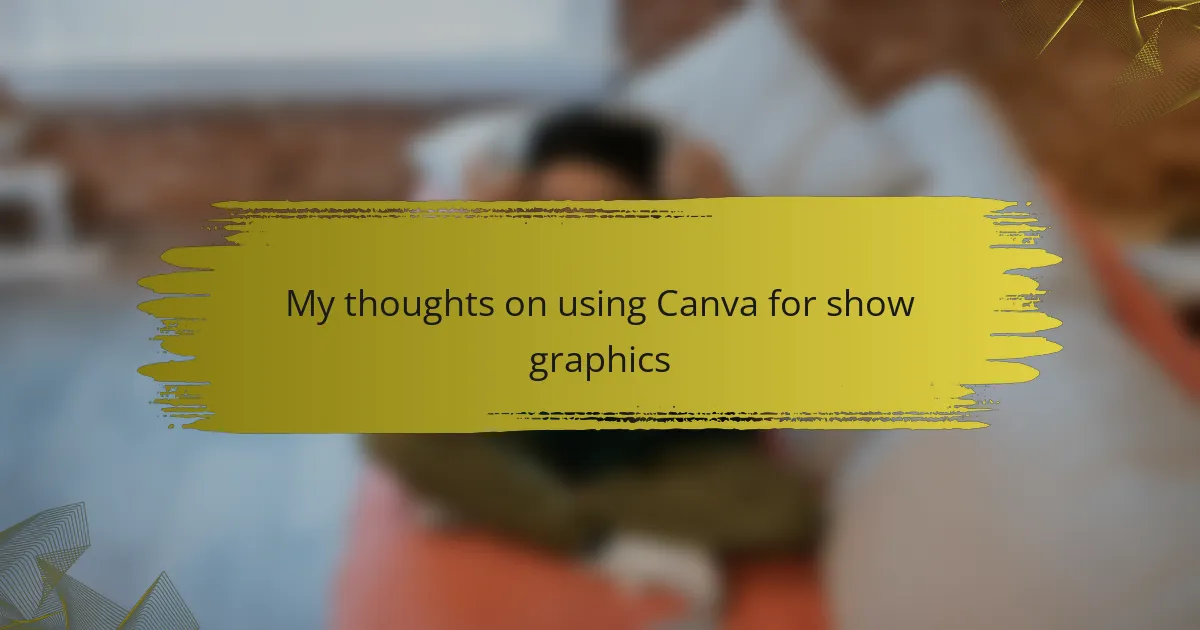Key takeaways
- Independent radio media prioritizes local content, fostering community engagement and amplifying underrepresented voices.
- Visual graphics are crucial for attracting listeners and enhancing storytelling in independent radio.
- Canva offers user-friendly tools and collaboration features that streamline graphic design for radio programs.
- Effective design tips include maintaining a cohesive color scheme, using white space, and considering the audience’s preferences for engagement.
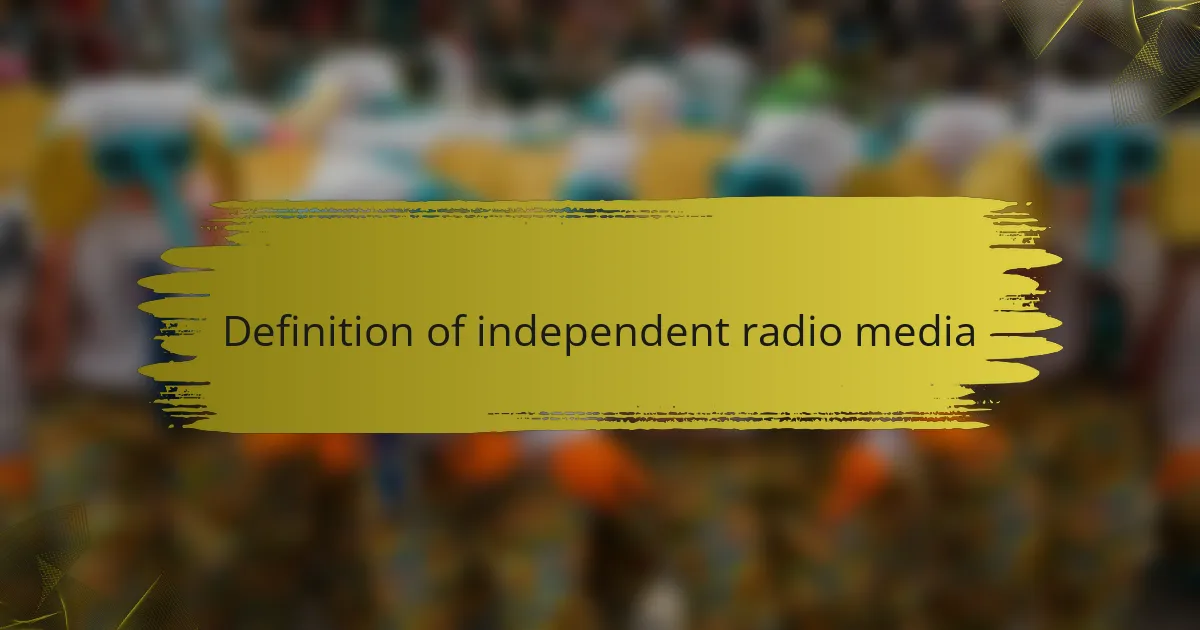
Definition of independent radio media
Independent radio media refers to radio stations and programs that operate without the oversight of major corporations or government entities. This autonomy allows them to focus on diverse voices and underrepresented stories, creating a unique sound distinct from mainstream media. Have you ever tuned into a local station and felt that special connection to your community? That’s often the heartbeat of independent radio.
These platforms prioritize local content and grassroots engagement, fostering relationships with their audiences that larger networks might overlook. I remember the first time I discovered an indie radio show; it felt like I was part of a hidden gem where every story mattered. Independent radio often functions as a catalyst for social change, amplifying voices that challenge the status quo and encouraging community dialogue.
Moreover, independent radio can provide essential coverage of issues that may be neglected by larger media outlets. This is critical in today’s media landscape, where the lines between information and entertainment can sometimes blur. It invites listeners to think critically and engage on various levels, sparking conversations that resonate far beyond the airwaves.
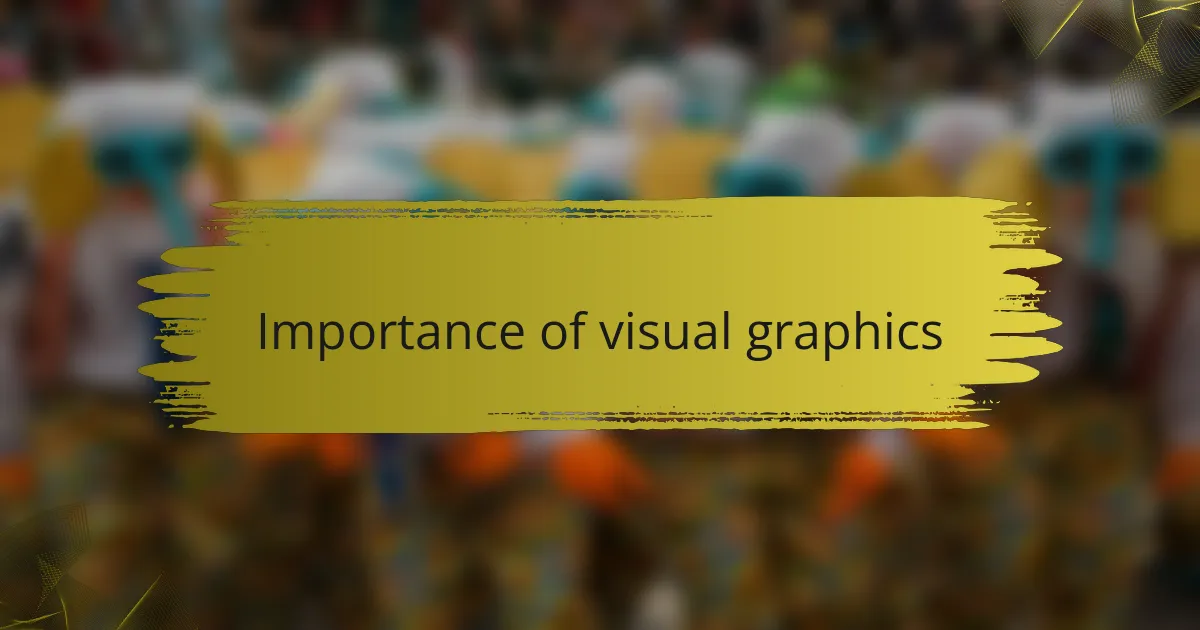
Importance of visual graphics
Visual graphics play a pivotal role in capturing the essence of independent radio media. I’ve often found that a striking image or an eye-catching flyer can draw in listeners who might otherwise scroll past. Think about it: when you see vivid visuals that resonate with the message, it creates a sense of familiarity and engagement, luring you into the experience even before you hit play.
Using visuals also enhances storytelling. I still remember a particular event where a vibrant graphic representing a community gathering suddenly made the idea feel tangible and inviting. It was more than just information; it felt like a personal invitation to be part of something meaningful. This connection is what independent radio thrives on, setting it apart from more generic platforms.
Moreover, in a digital age flooded with content, effective visual graphics help to elevate independent radio’s unique voice. They can convey the essence of a show or a community event at a glance, making it easier for potential listeners to grasp the excitement. Have you ever felt drawn to a show simply because its graphics sparked your curiosity? I certainly have, and it reminds me of how powerful well-designed visuals can be in fostering a loyal audience.
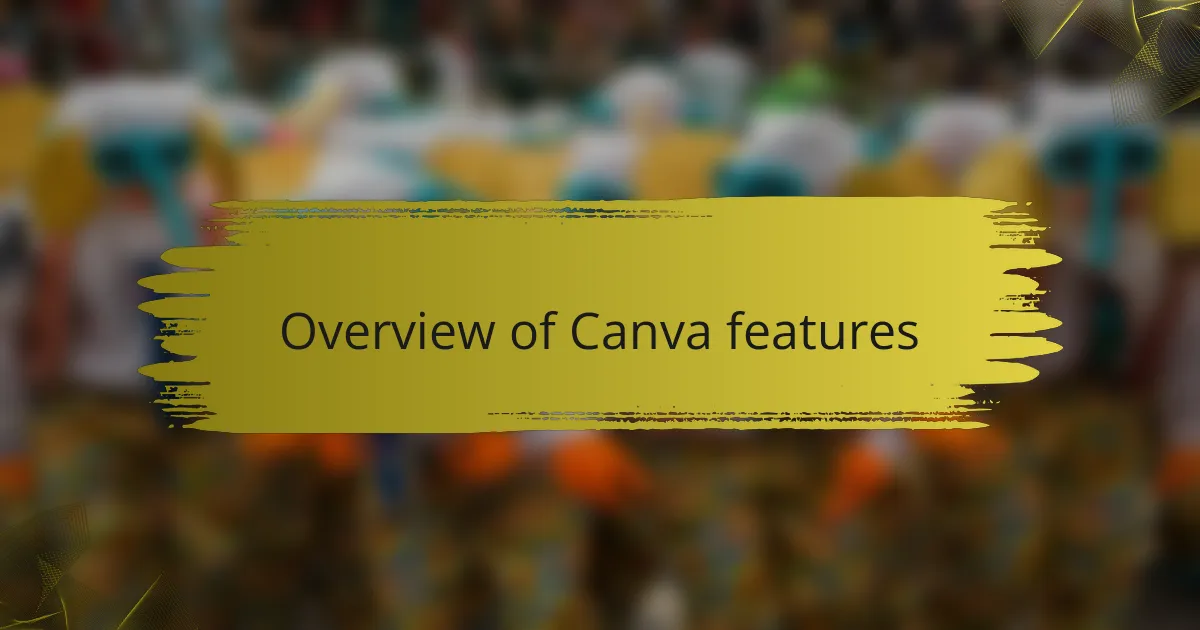
Overview of Canva features
Canva offers a wide range of features that cater specifically to those creating show graphics for independent radio media. I’ve found that its user-friendly interface makes it easy to visualize concepts without requiring advanced design skills. This accessibility is a blessing, especially when I’m on a tight schedule, wanting to whip up compelling visuals that resonate with my audience.
The platform provides a variety of templates, illustrations, and design elements that can elevate your graphics with minimal effort. My experience has shown that even a simple background can dramatically improve the overall aesthetic of promotional materials. In those moments when I feel stuck creatively, Canva’s vast library sparks inspiration and helps me to develop cohesive branding for my shows.
- Drag-and-drop functionality for ease of use
- A vast library of customizable templates tailored for social media, presentations, and more
- Collaboration features that allow team members to work together in real-time
- Access to a variety of fonts, images, and icons to fit any theme
- Ability to resize designs for different platforms without starting from scratch
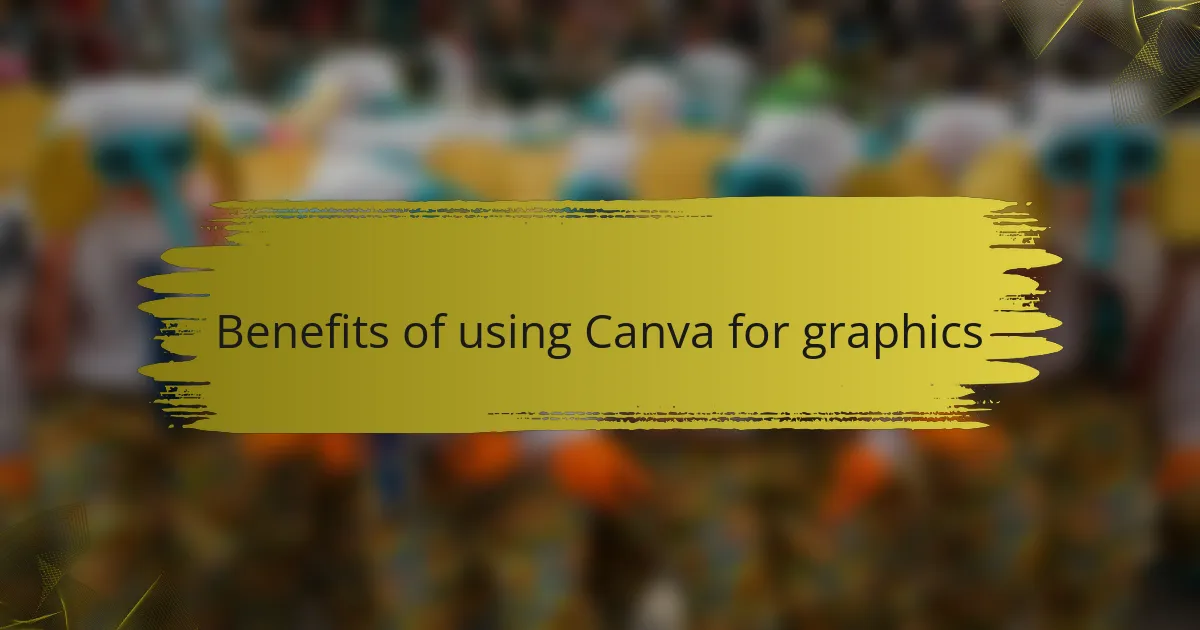
Benefits of using Canva for graphics
Canva offers a remarkable advantage in easily creating visually appealing graphics. I remember a time I was scrambling to prepare for a radio show’s promotional push. With Canva, I could quickly select a vibrant template, customize it, and produce eye-catching graphics in a fraction of the time it would take with traditional design software. Isn’t it amazing how a well-designed flyer can draw in an audience?
Another benefit I deeply appreciate is the collaborative nature of Canva. There was a project when my team needed to coordinate on different design elements for an upcoming event. With Canva, we could work on the same design in real-time, making adjustments and sharing feedback instantly. This not only streamlined our process but also fostered a creative synergy I hadn’t experienced before.
Additionally, Canva’s extensive library of assets is a treasure trove for anyone in independent radio media. One day, while searching for the right image that captured the essence of our community, I stumbled upon an illustration that felt like it was made just for us. Having access to such diverse visuals allowed me to craft graphics that truly resonated with our listeners, making each piece not just informative, but emotionally engaging.
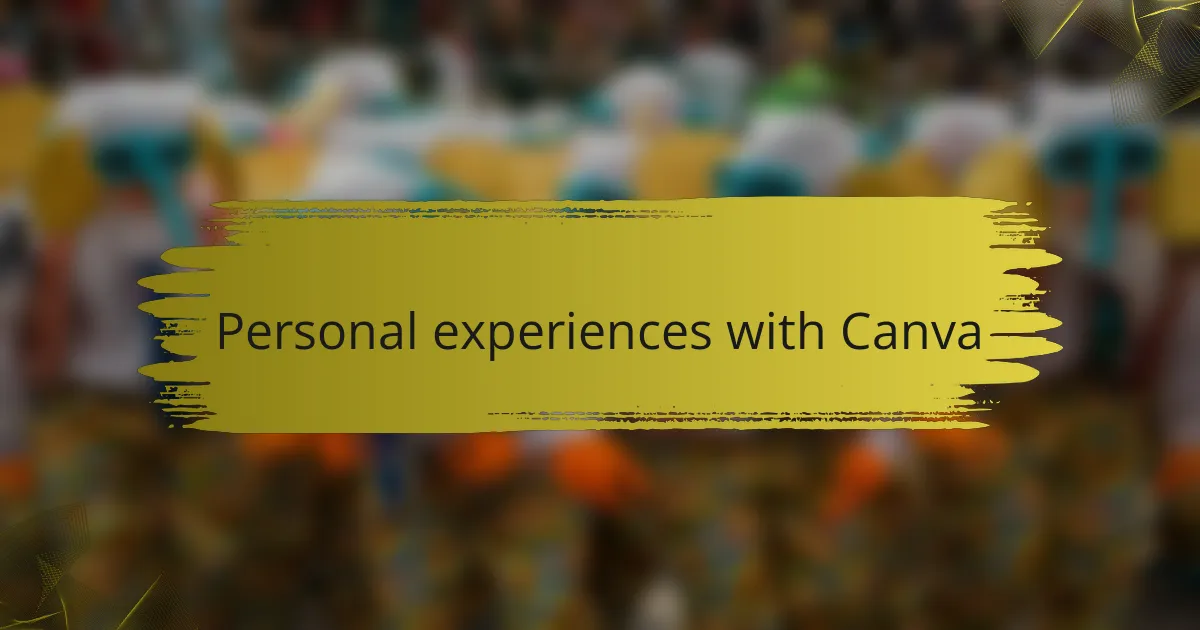
Personal experiences with Canva
Using Canva for creating show graphics has been a bit of a game changer for me. I remember the first time I designed a promotional image for our indie radio show. The process was intuitive, and I felt a satisfying thrill as I watched my vision come to life, knowing I could craft something visually appealing without needing advanced design skills.
What struck me the most was how easy it is to collaborate with my team. I can share designs directly within the platform, and we can provide feedback in real time. This has made our workflow smoother and more creative; everyone feels like they have a voice in the design process, which is incredibly empowering.
Here’s how I would compare creating show graphics with Canva versus traditional graphic design tools:
| Aspect | Canva | Traditional Graphic Design Tools |
|---|---|---|
| User-Friendliness | Very easy to use; ideal for non-designers | Steep learning curve; requires advanced skills |
| Collaboration | Real-time collaboration features | Limited collaboration capabilities |
| Cost | Free version available; affordable pricing for premium | Often expensive; requires software licenses |
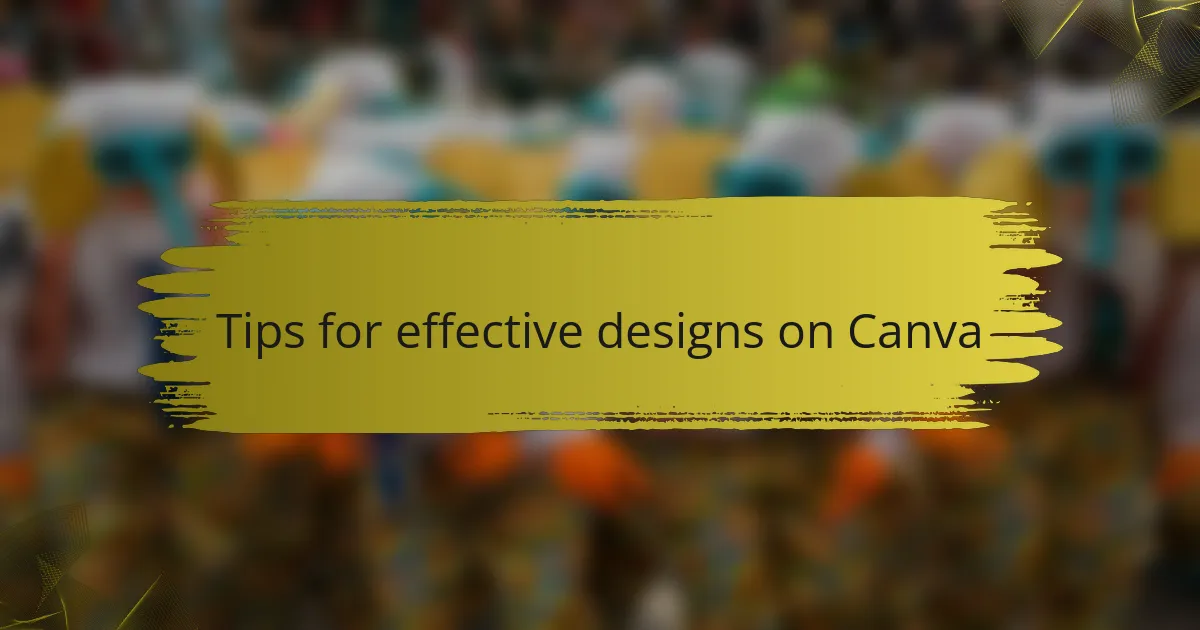
Tips for effective designs on Canva
When I first started using Canva for my show graphics, I discovered that simplicity often leads to the most effective designs. One key tip is to stick to a cohesive color scheme that reflects your brand identity—this builds recognition and gives your graphics a professional look. Additionally, utilizing white space can enhance readability and make your content more inviting, which is particularly important when conveying messages through independent radio media.
Another essential tip is to choose fonts wisely. Mixing too many typefaces can be distracting, so I recommend selecting a primary font for headers and a simpler one for body text. I’ve noticed that this approach not only enhances visual appeal but also keeps the focus on the message.
Lastly, always consider your audience. Tailoring your designs to resonate with your listeners can create a stronger connection. I often ask myself what my audience enjoys visually, and this insight guides my design choices.
| Tip | Reason |
|---|---|
| Cohesive Color Scheme | Builds brand recognition and professional look |
| White Space | Enhances readability and invites engagement |
| Font Selection | Keeps focus on the message and improves visual appeal |
| Audience Consideration | Creates a stronger connection with listeners |
